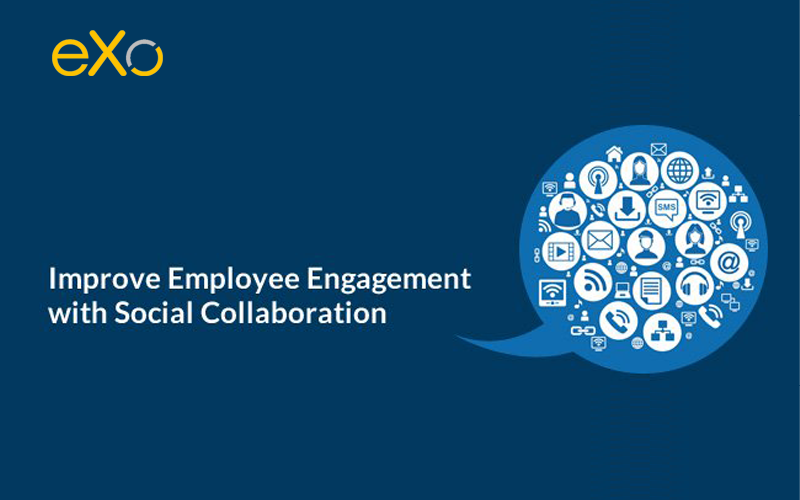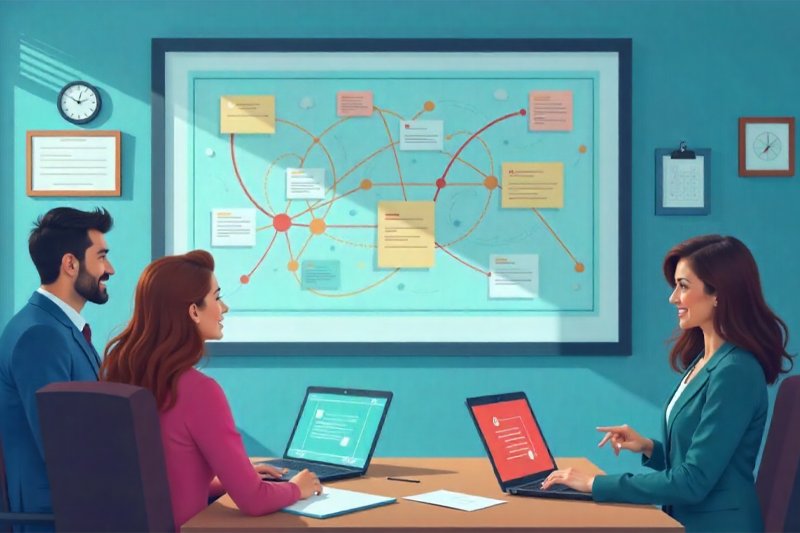- Veronika Mazour
- June 10, 2015
Improve Employee Engagement with Social Collaboration
According to Gallup, only 31.5% of employees were engaged in their jobs in 2014. The lack of employee engagement is a serious economic issue and a costly problem to most organizations. Disengaged employees are less productive and unhappier at work, affecting their quality of work and that of those around them. The Bureau of National Affairs in the US estimates American businesses lose $11 billion annually due to employee turnover when disengaged employees leave. Engaged employees, on the other hand, drive profit. Employees who care about their work offer better service and are more productive, which in turn affects the whole business all the way up to higher shareholder returns.

Content
Social collaboration makes people more engaged
Successful social collaboration helps people cope with today’s demanding workplace by providing them access to the people and information they need to do their jobs. When 60% of US jobs involve non-routine work, cognitive overload could cause people to dislike their work and disengage from it. Social collaboration tools make it easier to get help from a colleague or find information when employees need it so they feel properly supported in the workplace.
This, in turn, creates a positive company culture in which people are encouraged to ask for, and provide, help. Corporate culture consists of the (often) unspoken rules of how things are done in the company. To actively build organizational culture you need key people to model the right kind of behavior. Social tools in turn can play an important role in amplifying these behaviors. If the aim is to get employees to openly ask for help when they are stuck, a thumbs up or a positive comment from a senior manager on the company social network not only sends a message to the employee that he did the right thing, but also shows other employees that it’s perfectly ok to show that you don’t know answers to all the questions.
Social collaboration tools also open the doors to more effective communication. Traditional top-down communication is easy to ignore – it just sleeps in the corner of one’s screen or archived emails. A social intranet, on the other hand, enables managers to have two-way conversations with their staff – a communication message can be posted, reshared and discussed. This not only helps to get messages across better, but also builds trust and helps employees stay on top of what’s happening in the organization.
Finally, social collaboration tools can help people feel that they are making a meaningful contribution to your organization and that they’re being heard. When employees are empowered to share and develop ideas, they will feel a stronger connection to your company. Frontline staff, for example, is often an excellent source for product ideas and tweaks that the product team would not have been able to come up with because they don’t interact with the target audience on a daily basis. Allowing employees to chime in with ideas and feedback can help your company remain innovative, while also helping you to engage your employees.
Deutsche Telekom, Europe’s biggest telecommunications company, is a good example of the powerful effect social tools can have on corporate culture and staff engagement. The company introduced a social forecasting and crowdsourcing tool to tap into the expertise of their employees to learn about customer needs, competition and market trends. They got that and much more: the employees started to discuss the company’s decisions, products, and goals among themselves. So in addition to market intelligence they managed to increase overall employee motivation and engagement.
What are you doing to improve internal communication and increase employee engagement?

FREE WHITE PAPER
Guide to
Employee Engagement
FAQs
What is employee engagement?
It’s the willingness of an employee to help his company progress. It is a positive behavior, which manifests itself by a strong involvement in his work and by a great motivation. This allows the company to evolve both in terms of its activity and on a human level.
How to Improve Employee Engagement in the Workplace?
- Ensure a strong corporate culture
- Ensure good relationship with management
- Foster good relationships between the colleagues
- Think about employee recognition
- Express meaning for work in your organization
- Make well-being and work/life balance your priority
- Allow more flexibility and autonomy
- Invest in skills development and training
➝ Find out how to improve employee engagement in the workplace
- Tags: Employee engagement, Collaboration
Related posts
- All
- eXo
- Digital workplace
- Employee engagement
- Open source
- Future of work
- Internal communication
- Collaboration
- News
- intranet
- workplace
- Knowledge management
- Employee experience
- Employee productivity
- onboarding
- Employee recognition
- Change management
- Cartoon
- Digital transformation
- Infographic
- Remote work
- Industry trends
- Product News
- Thought leadership
- Tips & Tricks
- Tutorial
- Uncategorized
Leave a Reply
( Your e-mail address will not be published)


